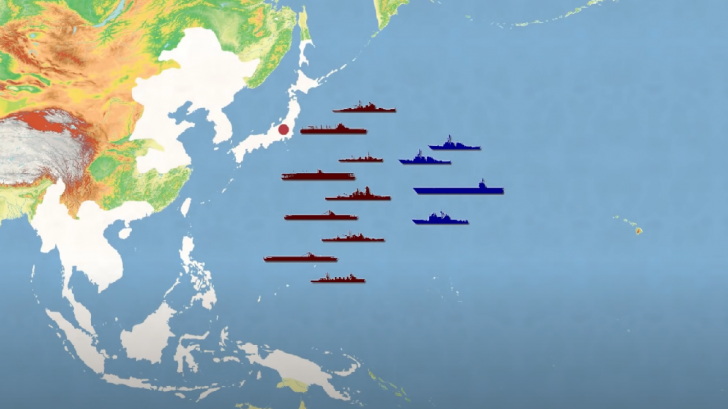Can one American Carrier Strike Group successfully go up against Japan’s entire Navy?
Spring of 1942
Japan sets its sights on the Hawaiian archipelago. In response, the CSG deploys an E-2C Hawkeye for surveillance and a handful of helicopters during its downtime. A CSG’s Air Wing carries around 6 to 20 helicopters, depending on the size of the Strike Group.
Assembling The Strike Group
Since Japan would have no idea of the E-2C’s presence, it would buy time for America to deploy their units from the carrier. Nimitz-class ships usually have 4 plane squadrons, so waves of F-18s would likely be sent toward the Japanese fleet.
Against Japanese Interceptors
Japan’s A6M Zero only has a flight ceiling of about 34,000 feet. In comparison, the F-18E can go up to 51,000 feet, making them safe from Japanese interceptors. For additional safety precautions, the US could also bring radar-jamming planes to blind any Japanese radars present during the encounter.
Bombs Away
The lightly-armored Japanese vessels could be easily hit with Harpoon missiles at subsonic speeds. At this point, the Japanese ships are now at the mercy of the pilots’ aim. If the first wave of 10 planes carried 40 Harpoons, then almost all of Japan’s carriers would likely end up destroyed.
Now In Disarray
After the initial onslaught, the supercarrier could also deploy two more waves while holding back a dozen planes for protection. Within several hours, the Japanese fleet would have been scrambling to sail away. Though some might escape, most of their fleet carriers would still be lost – including over a third of their other large surface vessels and several submarines.
Change of Plans
With the Japanese Navy now crippled, the CSG could potentially try moving toward Japan’s mainland. However, doing so also needs a ton of fuel. Japanese submarines could also destroy lone American vessels in the event of an attack. Most importantly, the mines surrounding Japan’s waters might prove to be too dangerous for a carrier to traverse.
Retaking Other Islands
What if the CSG opted to retake the islands instead? The Air Wing could perform up to 50 strike sorties per day while dropping about 200 or more guided bombs daily. Japanese forces occupying the islands would then be pinned down, as American two destroyers continue to lay waste on the islands while the carrier stays in Hawaii. In just a span of almost 2 months, the CSG could probably retake the Aleutian, Guam, and Wake Island altogether.
What Happens Next?
It is likely that the CSG’s aircraft would rely on WWII-era weaponry at some point. Spare parts would also be hard to come by – and the same can be said with the electronics. This means that the American fleet would only have about half a year of operations, give or take.
Navigation Problems
Ships, planes, and even bombs used by the CSG rely on GPS for navigation. In 1942, there would be no satellites or any other compatible ground stations to provide signals. Still, one could argue that the CSG might rely on LORAN (long-range navigation) by this point.
Not-So-Precise Bombs
Ultimately, its laser-guided bombs and a thousand inertially-guided bombs would not be enough to cripple Japanese production plants. Even if the CSG does neutralize the plants, the original US Navy would still need a lot of time to assemble troops to seize the Japanese mainland. Nevertheless, the CSG could prevent Japan from expanding further.


